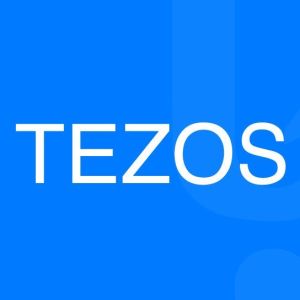Deep Dive into Tezos Node API: Key Endpoints and FunctionalityPosted by Tezos Node API on April 19th, 2024 Introduction: Tezos, a groundbreaking blockchain platform known for its self-amendment and on-chain governance features, offers developers a powerful toolkit for building decentralized applications (dApps) and smart contracts. At the heart of Tezos development lies its Node API, a crucial interface that facilitates interaction with the blockchain network. In this blog post, we will take a comprehensive look at the Tezos Node API, exploring its key endpoints and functionality to understand how developers can leverage its power to create innovative blockchain solutions. Understanding Tezos Node API: The TTezos node API serves as the gateway for developers to communicate with the Tezos blockchain network. It provides a set of endpoints that enable various operations such as querying blockchain data, broadcasting transactions, managing accounts, and interacting with smart contracts. By utilizing the Tezos Node API, developers can build applications that harness the full potential of the Tezos blockchain. Key Endpoints and Functionality:
1. Chain Endpoint: The Chain endpoint allows developers to retrieve information about the current state of the Tezos blockchain, including block metadata, current head block hash, and protocol information. This endpoint is essential for synchronizing applications with the latest blockchain updates. 2. Blocks Endpoint: Developers can utilize the Blocks endpoint to retrieve detailed information about specific blocks on the Tezos blockchain, such as block hash, timestamp, and operations included in the block. This endpoint is valuable for conducting blockchain analytics and monitoring network activity. 3. Operations Endpoint: The Operations endpoint enables developers to query operations included in specific blocks, such as transactions, delegations, and smart contract interactions. By analyzing operations data, developers can gain insights into network activity and user interactions. 4. Accounts Endpoint: With the Accounts endpoint, developers can retrieve information about Tezos accounts, including balance, delegate status, and staking information. This endpoint is crucial for managing user accounts within decentralized applications. 5. Transactions Endpoint: Developers can use the Transactions endpoint to query transaction data on the Tezos blockchain, including sender, receiver, amount, and timestamp. This endpoint facilitates transaction monitoring and analysis for both users and developers. 6. Smart Contracts Endpoint: The Smart Contracts endpoint provides functionality for interacting with smart contracts deployed on the Tezos blockchain. Developers can deploy contracts, invoke contract methods, and retrieve contract storage data using this endpoint. It serves as the foundation for building complex decentralized applications with smart contract logic. 7. RPC Endpoint: The RPC (Remote Procedure Call) endpoint serves as the primary interface for interacting with the Tezos Node API. Developers can send RPC requests to query blockchain data, broadcast transactions, and execute smart contract operations. This endpoint forms the backbone of Tezos blockchain integration in applications. 8. Network Configuration Endpoint: The Network Configuration endpoint allows developers to retrieve information about the Tezos network configuration, including chain ID, network version, and supported protocols. This endpoint is essential for ensuring compatibility and interoperability across different Tezos network environments. 9. Monitoring and Management Endpoint: Additionally, the Tezos Node API offers endpoints for monitoring and managing the node itself. Developers can retrieve node health status, view node statistics, and perform administrative tasks such as node configuration and maintenance. Conclusion: In conclusion, the Tezos Node API provides developers with a robust toolkit for building decentralized applications and interacting with the Tezos blockchain network. By leveraging key endpoints such as Chain, Blocks, Operations, Accounts, Transactions, Smart Contracts, RPC, Network Configuration, and Monitoring, developers can unlock the full potential of the Tezos blockchain ecosystem. Whether it's querying blockchain data, deploying smart contracts, or managing network infrastructure, the Tezos Node API offers the flexibility and functionality needed to bring innovative blockchain solutions to life. As the Tezos ecosystem continues to evolve, the Tezos Node API will remain a cornerstone for developers seeking to build the decentralized future. Like it? Share it! |


